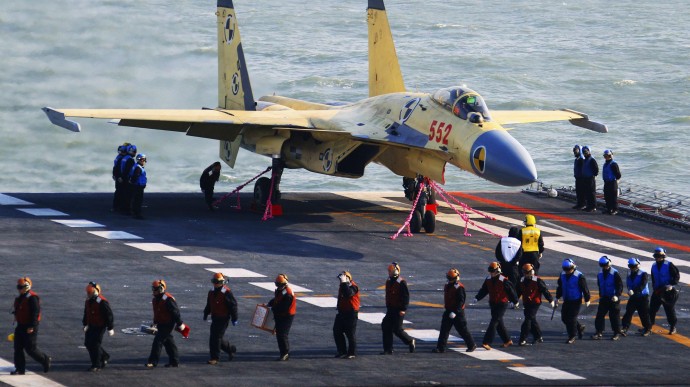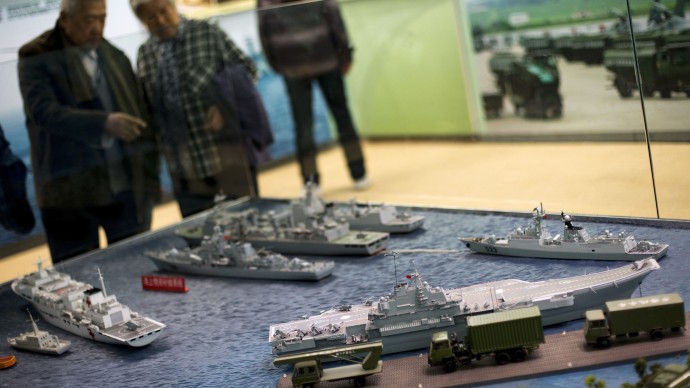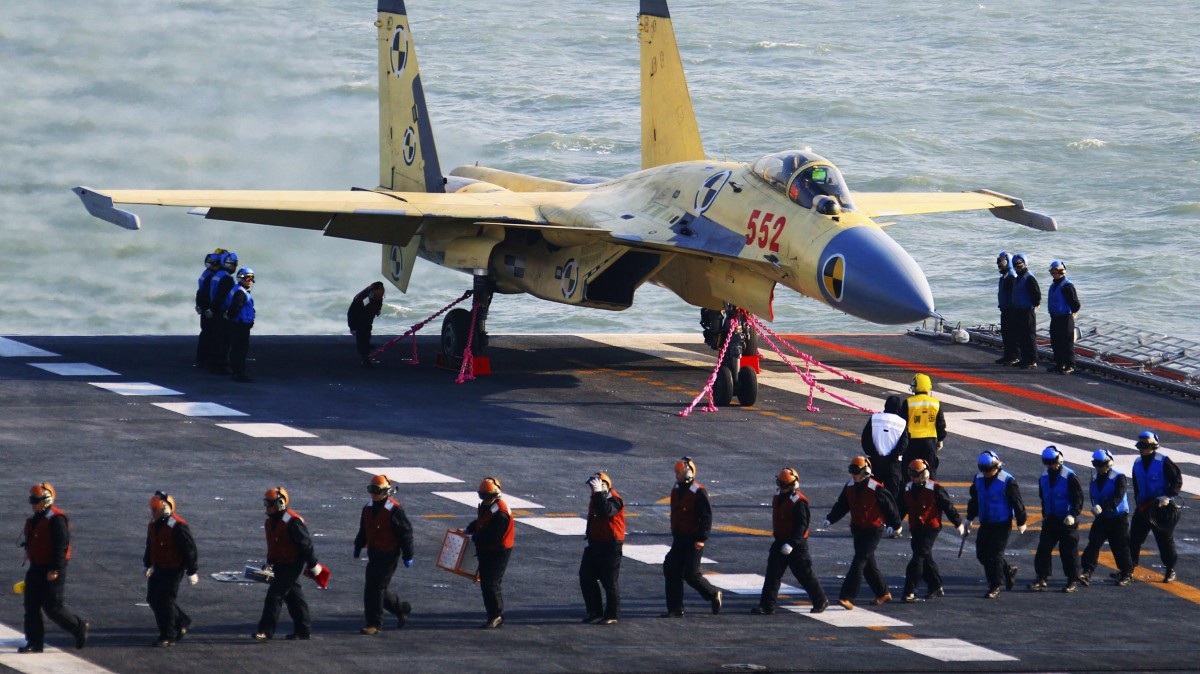
Once again, the American right wing has vomited forth racist accusations that President Obama, who just thumped conservatives in the recent election, doesn’t really have American interests at heart. On Thursday, Texas Republican Louie Gohmert announced on a conservative radio program that Obama orchestrated Gadhafi’s ouster from Libya so “al-Qaida and the Muslim Brotherhood could take over the country.” While laughable, the sitting congressman may have a point about infiltration of the U.S. government at the highest levels. I maintain, however, that it is his party that is playing role of useful idiot for anti-American interests and not the Democrats.
Consider, for instance, that ever since the terror attacks of Sept. 11, 2001 the United States has become ever more deeply embroiled in the affairs of the Islamic world. Afghanistan, Iraq, Israel and Palestine and, now, the Arab Spring and the shadowy drone wars in Pakistan, the Horn of Africa and, soon, Mali, have consumed Washington’s attention and resources in an unprecedented manner. However, quietly and mostly ignored by the U.S. public, a newly powerful strategic adversary has risen in East Asia – China, a country empowered and enriched by global capitalism and U.S. business interests.
Of course, China as a competitor is not a new idea. Indeed, since the economic reforms brought about by Mao’s successor, Deng Xiaoping, the Asian giant has recorded tremendous economic growth. Seemingly overnight, sleepy cities such as Shanghai and Beijing transformed themselves into powerhouses of Chinese capitalism while cities previously unknown in the West, like Chongqing – widely referred to as China’s Chicago – now rank as major global metropolises.
This economic transformation has influenced all aspects of the global economy on both sides of the economic equation. China’s immense demand for commodities such as oil, iron ore, copper and food, for instance, drives up prices even as the country’s growing industrial prowess drives down prices for manufactured goods. From Midwestern farm country to the factories of the New South, Americans have come to know intimately the meaning of Chinese economic growth, where the “China price” can make or break entire communities.
The forgotten history
Likewise, seeing China as a deadly adversary is also not new. Largely forgotten today is the small issue of Chinese participation in the Korean War, when Mao sent his legions into Korea by the hundreds of thousands in order to save North Korea from military defeat at the hands of the United States. For both countries, combat on the Korean peninsula was a deadly serious affair. China’s surprise attack across the Yalu river in November of 1950 dealt an unsuspecting U.S. a devastating defeat that, to this day, remains one of the bloodiest debacles in U.S. military history.
Far from the war being over by Christmas, as was widely assumed by U.S. troops on the ground, the U.S. Eighth Army was forced on the longest retreat in U.S. Army history – only being saved from complete destruction at the hands of the People’s Liberation Army by U.S. Air Force and Navy air power and heroic rearguard fighting by the U.N.’s Turkish Brigade, which fought off the advancing Chinese for two days at the Battle of Kunuri. In some of the fiercest, most desperate fighting ever conducted by American forces anywhere, U.S. forces suffered 15,000 casualties at the Battle of Chosin Reservoir, where an entire U.S. Marine division and an Army Regimental Combat Team found themselves surrounded by Chinese forces.
The U.S. eventually recovered its position in Korea, of course, and inflicted crippling losses on the technologically inferior Chinese army in the process, but the U.S. was only able to achieve a stalemate in that war and refrained from seriously provoking China thereafter. Indeed, fear of Chinese and Soviet intervention in Vietnam arguably protected Hanoi from a U.S. ground invasion during the Vietnam War a decade later. Avoiding another Korea, in other words, became a watchword for U.S. Cold Warriors.
Pairing the economy and military together
So, Chinese economic might and military confrontation are, by themselves, nothing new. What is new, however, is their combination. During the Korean War, China remained a poor, technologically-backward country that fought the U.S. to the standstill only because the U.S. refrained from targeting the Chinese mainland for fear of Soviet intervention. The PLA’s human wave attacks, though terrifying to unprepared U.S. ground troops caught in the frozen wastes of northern Korea, were no match against U.S. forces operating from prepared positions and benefitting from a massive superiority in firepower. Being poor, Beijing spent heavily in lives while Moscow provided the material, from artillery pieces to fighter planes, China fought with. When Moscow tired of the conflict, Beijing found it could not continue even if it wanted to – China simply didn’t have the technological or industrial resources needed to fight a prolonged conventional war of the type it was conducting in Korea.
In contrast, during Chinese economic expansion in the late 1980s and early 1990s, the U.S. and China were no longer military adversaries. They had, in fact, actually aligned with one another against the Soviet Union. Though never formalized in a treaty, the U.S.-Chinese alliance was substantial and sustained. It included, for instance, the sharing of intelligence between the two powers, diplomatic coordination vis-à-vis Moscow, the provision of U.S. technological assistance to Chinese defense efforts and, importantly, the opening up of trade and investment between the U.S. and China.
When the USSR collapsed in December of 1991, several factors continued to propel Sino-American relations forward in a cooperative direction, including their increased economic dependence on one another. As early as 2000, however, it became apparent that the relationship was beginning to change for the worse. Chinese economic competition was beginning to seriously hurt U.S. industry while Chinese rearmament and nationalism – stoked by Beijing as a way to buffer the ruling party’s political legitimacy as the country’s socialist economy was junked to make way for capitalist reform – was beginning to concern both Washington and China’s neighbors. Indeed, people forget, but the first foreign policy crisis of the George W. Bush administration did not involve the Middle East, but an encounter between a U.S. electronic reconnaissance plane and a Chinese fighter aircraft in April of 2001 over the South China Sea.
A U.S. “pivot” toward China, Asia and the Pacific, however, was delayed by a decade by al-Qaida. Instead of shoring up alliances in the Pacific, as President Obama is doing today, the U.S. engaged in a campaign of imperial policing in a perpetually restive Middle East – where copious amounts of U.S. blood and treasure were largely wasted in grand schemes to remake the region and its politics by force. As the U.S. got bogged down with the military, stagnated economically and polarized politically, Beijing used the time al-Qaida and Bush provided to continue its economic expansion, build up its armed forces and flex its new muscles abroad.
Gaining ground
So what has this extra decade bought China? For one, Beijing’s military capabilities are far more sophisticated and worrisome than they were in 2000. While still likely no match for the U.S. as of yet, China has nonetheless developed impressive naval and air capabilities that could deny the U.S. naval access to the seas bordering China – making life extremely unpleasant for the U.S.’ regional allies.
The Chinese have, for instance, developed and are now deploying an anti-ship ballistic missile than can be safely launched from the  Chinese mainland and then guided to hit ships far out at sea – including U.S. aircraft carriers, the crown jewels of U.S. naval power and power-projection capabilities. Aside from close-in air-defense systems mounted on U.S. ships, there is very little the U.S. military can do to stop such missiles beyond evasive maneuvering, electronic interference and hoping the system isn’t as good a “carrier-killer” system as it is advertised to be. Indeed, the mere possibility that these missiles can hit and kill U.S. carriers has forced the Pentagon to reconsider its entire strategy in the Western Pacific, and the Air Force’s proposal for a new intercontinental bomber to replace the B-52, B-1 and B-2 bombers has been touted as a potential counter to Beijing’s carrier-killing ballistic missiles.
Chinese mainland and then guided to hit ships far out at sea – including U.S. aircraft carriers, the crown jewels of U.S. naval power and power-projection capabilities. Aside from close-in air-defense systems mounted on U.S. ships, there is very little the U.S. military can do to stop such missiles beyond evasive maneuvering, electronic interference and hoping the system isn’t as good a “carrier-killer” system as it is advertised to be. Indeed, the mere possibility that these missiles can hit and kill U.S. carriers has forced the Pentagon to reconsider its entire strategy in the Western Pacific, and the Air Force’s proposal for a new intercontinental bomber to replace the B-52, B-1 and B-2 bombers has been touted as a potential counter to Beijing’s carrier-killing ballistic missiles.
These missiles, however, are not the only naval advances China has made. The Chinese navy has introduced into service an aircraft carrier, the Liaoning, an old Soviet-era ship that was purchased from Ukraine and refurbished by the People’s Liberation Army Navy (PLAN). The ship made news recently when it was announced that it had for the first time launched and landed jet fighters over Thanksgiving weekend, a milestone in the PLAN’s naval aviation program that puts China in the limited club of nations (U.S., Russia, India, Brazil and France) fielding aircraft carriers capable of launching and recovering fixed-wing aircraft.
By itself, the Liaoning is no threat. It is old, despite being refurbished, and the Chinese are completely inexperienced in carrier operations of the type the U.S. has been conducting since before the World War II. Furthermore, Chinese carrier technology, from avionics to ship-board radar, is still in its nascent stage of development and thus likely nowhere near U.S. capabilities. Furthermore, this is one carrier carrying a limited number of planes whereas the U.S. carrier fleet currently consists of 11 ships, each far more powerful than China’s sole ship, with two more under construction and an additional American flattop being planned.
Why does China want this?
These advantages, however, could prove to be ephemeral. China, too, has a shipbuilding program. Media speculation suggests that China could deploy a domestically-manufactured aircraft carrier sometime next year with an additional, domestically-built carrier to be deployed possibly as early as 2015. By 2020, again if speculation is credible, China could begin serious work on a nuclear-powered aircraft carrier of the type in service with the U.S. Given China’s prodigious naval construction capabilities, the numerical advantage in ships that the U.S. currently enjoys in the Western Pacific could be seriously threatened. Since the U.S. fleet will be spread out across the globe and the Chinese fleet can be expected to be concentrated in the seas bordering China, the numerical balance of power between the U.S. and Chinese Pacific fleets may become much closer than many in the U.S. Navy are willing to admit.
Combined with other new, equally impressive military developments — such as the fielding of its first stealth fighter, a manned space program, modernization of its land forces and what is widely reputed to be a first-rate cyber warfare capability — China will soon be able to field a force second only to that deployed by the United States. So what is the point of this naval buildup? What does China hope to accomplish by spending immense amounts of money to develop, build and field advanced military hardware like aircraft carriers and carrier-killing ballistic missiles? Who or what is this arming aimed at?
As China’s Foreign Minister clumsily pointed out at an Asian diplomatic conference in 2010, “China is a big country.” Big countries, naturally, have big militaries and when they are also growing very rich, very quickly, as China has been doing for some time, it is only natural that some of that growth will be funneled into military modernization. One would therefore expect China’s military to grow robustly in any case, so arming by itself is not terribly worrying. What is worrying is the degree to which that arming seems aimed at denying the United States access to the Western Pacific by directly threatening its powerful fleet of aircraft carriers. Why would China do this?
First, of course, is the still unresolved status of Taiwan – a now democratic country and U.S. ally that Beijing refuses to give up its longstanding territorial claims to. Obliterating the U.S. ability to project naval power in the Western Pacific clearly makes it easier to deal with Taiwan militarily if Beijing choses to do so. Second, China has made a concerted push to expand its territorial claims into the resource-rich South China Sea, enraging its U.S.-dependent neighbors in the process. Third, of course, China’s economic lifeline to consumer markets in Europe, natural resources in Africa and the oilfields of the Middle East – upon which the Chinese economy is heavily dependent – suggests a broader ambition to have an ability to secure ocean-going lines of communication by force, if necessary.
What it comes down to
As the second decade of the 21st century rolls on, Chinese military growth, therefore, presents unique challenges for the U.S. going forward. Certainly, there is no reason to believe the U.S. and China will come to blows any time soon, let alone at all, but the sheer speed and scale of Beijing’s military buildup is cause for concern. The coming Cold War with China, though, will be nothing like the last one with the Soviet Union. If anything, the new international order being built by U.S.-China competition resembles Europe during the 19th century far more than the U.S.-Soviet Cold War.
There are now, like then, many more competing poles of serious power – like Russia, India, Japan and Europe, that will both manipulate and be manipulated by the geopolitical competition between Beijing and Washington. It is also a world that is much more fluid in terms of international trade, investment, migration and technological change – mirroring in many ways the economic patterns of that earlier century. Indeed, the close economic relationship between the U.S. and China looks far more like the relationship between Britain and Imperial Germany before World War I than the nonexistent economic relationship between the U.S. and the Soviet Union during the Cold War. Finally, the U.S., like Britain in the late 19th century, increasingly finds itself the weary guardian of a world order seemingly designed to deliberately undermine the economic primacy of its protector.
Thus, the ironic tragedy of the Bush years is this – militaristic policies put in place by U.S. neoconservatives to sustain U.S. military hegemony indefinitely has mostly operated to weaken it substantially. A capitalist world order protected by U.S. military might is now building up Washington’s primary geopolitical adversary. The money China is using to build its new fleet of aircraft carriers largely comes from U.S. consumers, who don’t realize that every day low prices at Wal-Mart come with geopolitical strings attached.
As a result, the power transition between a rising China and a declining U.S., once widely expected to really begin in earnest sometime in mid-century by most experts, is occurring now in real time thanks largely to the catastrophes brought about by the supremely incompetent Bush administration and the conservative movement that empowered him. In the coming race, we’ve lost one decade already. I very much doubt we can afford another.


